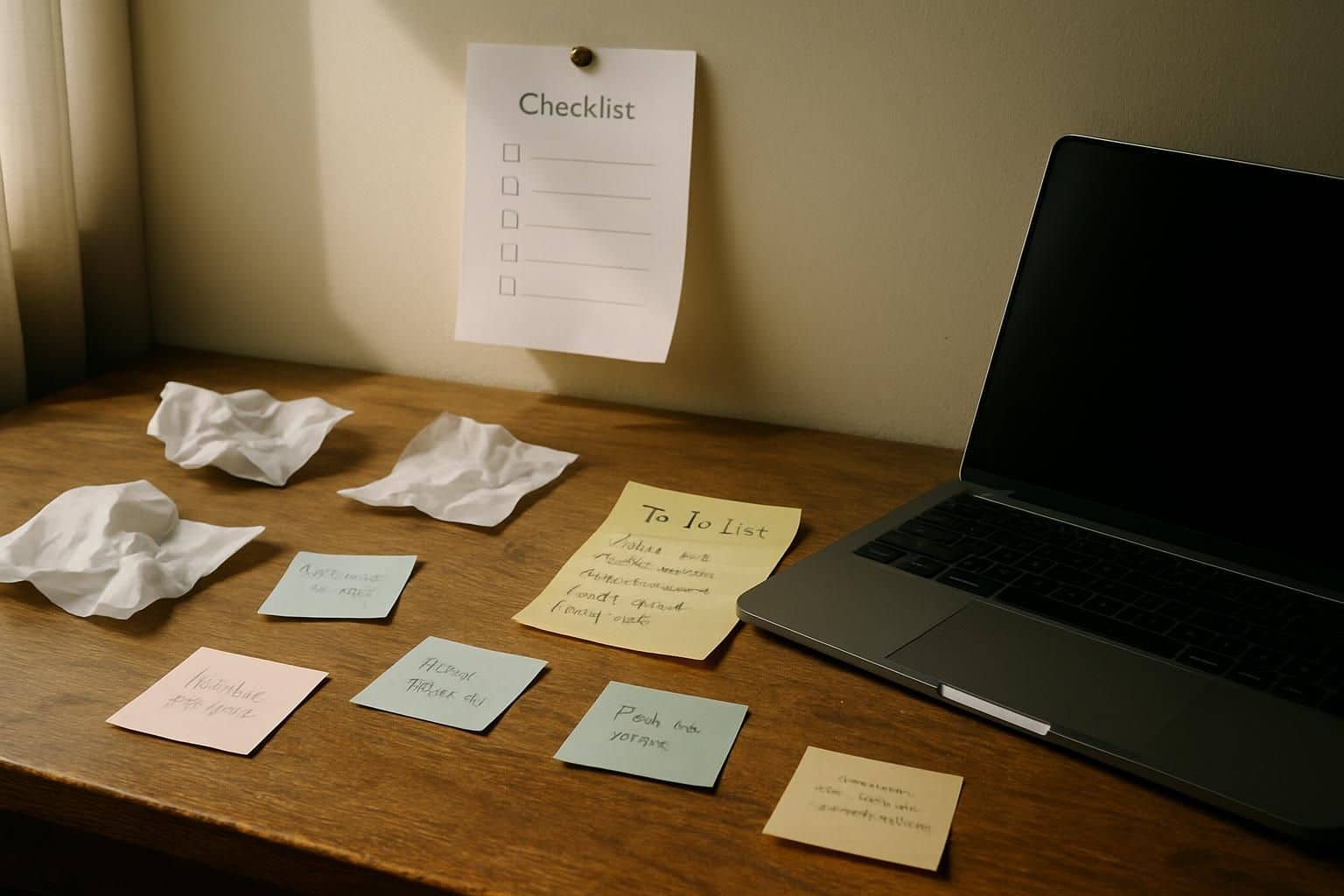Are you struggling with onboarding software developers and losing talent too soon? Strong developer onboarding can boost retention by up to 82% and productivity by over 70%. This post gives you a clear, step-by-step guide to welcome new team members, define clear goals, assign mentors, and build an engaging remote work culture.
Read on for seven simple steps to keep your skilled coders happy.
Key Takeaways
Effective onboarding helps your business keep talented developers—raising retention rates by 82% and boosting productivity by more than 70%.
Set up tools, software permissions, and welcome gifts well before your new hire starts—this shows them they’re valued and creates a strong first impression from day one.
Match every new developer with a buddy or mentor; organizations with this approach achieve results that are 87% better, since personalized guidance accelerates learning.
Start new hires off with smaller, low-pressure tasks to help build confidence early; doing this can speed up their onboarding timeline by almost 30%.
Schedule short daily check-ins throughout the first week, as this improves retention rates by about 40%; also, frequent feedback helps catch minor issues early before they grow bigger.
Table of Contents
What is Developer Onboarding?
 Developer onboarding helps new software engineers quickly settle into a team. It balances the excitement of beginning a new role with the stress of absorbing tons of information at once.
Developer onboarding helps new software engineers quickly settle into a team. It balances the excitement of beginning a new role with the stress of absorbing tons of information at once.
Effective onboarding covers key items like tool setup, company policies, and pairing newcomers with experienced mentors. The idea is to slowly build confidence through achievable tasks and clear guidance.
Many tech firms use a buddy system, helping fresh hires feel comfortable asking questions and settling in.
In my experience, solid onboarding turns new employees into committed team members who stay longer. My teams had better job satisfaction by creating psychological safety right from the start.
Providing time to review documents, understand internal systems, and tackle small, manageable tasks eased pressure and boosted essential skills. Remote onboarding, though, requires extra thought—virtual environments call for frequent check-ins and easy-to-access digital materials to replace face-to-face support.
For more detailed tips on enhancing your company’s approach, visit this guide on how to improve onboarding process.
Why is Effective Onboarding Important?

A strong onboarding process gives new software developers a great start on your team. Clear data backs this up—companies that invest in structured onboarding boost retention rates by 82% and lift productivity levels by more than 70%.
This matters a lot for tech groups, where speedy integration can shape project deadlines. Our tech leads have noticed clear onboarding tasks help new coders begin meaningful contributions sooner.
The benefits aren’t limited to faster code production either. According to Glassdoor, around 49% of newly onboarded employees begin adding noticeable value within their first week thanks to solid onboarding.
Solid onboarding also tackles the costly issue of employee turnover head-on. The data shows that 69% of workers tend to remain with a company at least three years if they experience effective onboarding.
Keeping talented people on board saves both valuable knowledge and money that might otherwise vanish with departing employees. Structured learning and peer mentorship boost team engagement scores and help tackle challenging problems across projects.
Good onboarding becomes even more significant for remote teams today. Remote coders often require extra support to fully grasp your team culture, build strong connections, and stay happy with their jobs over time.
Key Components of a Successful Onboarding Process

A solid onboarding system needs clear parts that work together to help new developers feel at home and ready to code… read on to see how these pieces fit into your team’s success puzzle.
Aligning with Company Culture and Values

Tech companies should weave their culture into onboarding from the very first day. Our team noticed a 56% boost in job performance once new developers felt included. Culture resonates best through real-life, practical examples—mission statements posted on office walls aren’t enough.
You can illustrate company values clearly during everyday activities like code reviews, sprint planning, or solving problems together. For remote developers, this becomes even more crucial, since they often miss casual office chats and interactions (remote software engineers).
Team-specific cultures also need attention from the start. Every development team forms its own coding standards, communication habits, and inside humor. Startups often match newcomers with experienced peers who can explain these unwritten rules naturally.
I’ve seen that assigning small tasks to new developers—in line with your team’s approach—works better than formal training sessions. This direct method lets new technical hires quickly pick up both company values and everyday work practices.
Setting Clear Goals and Expectations

Clear goals help new developers settle into your team quickly. Software engineers need specific targets to focus on, especially during those initial weeks and months. Each goal should align with company objectives and personal development plans.
This alignment provides a clear pathway—guiding their learning and highlighting how their role contributes value. Many leaders in technology fail to offer clear direction, leaving new employees unsure which tasks matter most.
Goals without clear expectations are just wishes in a codebase.
Make sure expectations cover technical standards and team interactions equally. New developers must grasp your coding conventions, understand the code review routine, and know acceptable team communication methods.
Sharing clear key performance indicators early lets them measure their own progress easily, reducing early confusion and increasing motivation. Proper goal-setting clarifies success clearly, enabling quicker and better problem-solving.
Your next step is developing a structured pre-boarding checklist—ensuring all necessary tools, permissions, and system access are set up before their first day.
Providing Structured Learning Resources

Structured learning materials are essential for effective developer onboarding. Google offers a great example—new hires there become fully productive 25% sooner, and 77% report a positive onboarding experience.
Useful resources to include are coding style references, clear API documentation, and straightforward tutorials matching your company’s tech tools. Well-prepared educational materials make a meaningful difference, boosting developer productivity by 42%, as staff better understand the code they use daily.
New teammates should have easy ways to gain needed knowledge, particularly those who work remotely. Combine text-based guides, helpful video demonstrations, and informal vibe coding sessions—where team members casually share screens and tips.
Include inline documentation, so developers can learn directly as they work. Add peer mentor programs into the mix, encouraging new staff to develop growth-oriented attitudes and higher engagement levels.
Your company’s aim should go beyond simple technical skills, creating confident developers ready and able to quickly make valuable contributions.
Pre-Onboarding Checklist

Setting up your new developers for success starts before their first day. A strong pre-onboarding process gives your tech team members the tools and mindset they need while working remotely.
Prepare Necessary Tools and Software Access

Tech teams should always order and prep equipment well before a developer’s start date. Doing this saves valuable hours and clearly shows new hires they’re important. At our company, IT sets up laptops ahead of time with coding environments, version control software, and testing applications fully installed.
We also give early access to team communication tools, email accounts, and project management systems.
The best onboarding experience starts with the right tools in the right hands at the right time.
Strong coordination between HR and IT makes this process smoother. Remote teams especially benefit from having all required tools ready from day one—it truly enhances their initial experience.
Software development roles often demand unique tools for different projects, so a customized checklist for each position makes sense. This personalized preparation immediately boosts new hires’ confidence and engagement, laying the groundwork for peer mentoring and ongoing growth.
Share Company Policies and Documentation
New developers appreciate having easy, clear access to company guidelines right from their first day. Smart teams often set up digital handbooks to clearly outline coding rules, work schedules, and team setups.
From our experience, sending these documents beforehand helps coders feel comfortable from the start. Our group relies on cloud storage to distribute important policies, eliminating the risk of vital information getting buried in email chains.
The digital handbook also helps remote workers easily find details without needing physical copies.
Clear documentation improves employee engagement and helps lay a solid foundation for customer satisfaction. Send your new hires secure links to Git procedures, meeting agendas, and communication platforms.
Early access allows team members time to familiarize themselves with company practices before starting real work. It’s up to leadership to regularly update these documents, ensuring they reflect current procedures rather than older, confusing information.
Send a Welcome Package
A welcome package goes beyond paperwork—it makes onboarding personal. That simple step gets new hires excited even before their first day. Tech companies often mail items like branded shirts, stickers, and handwritten notes to incoming staff.
These thoughtful packages help remote team members feel connected to the group early on.
Your welcome kit should balance useful items and playful surprises. Include company merchandise, a personal message from the team lead, or a coffee gift card for those first-week training sessions.
This simple gesture helps programmers feel appreciated immediately. Investing a little in this step can strengthen team bonds and improve retention numbers. Interested in advancing your tech career? Check out our resources on how to become a game developer.
First-Day Checklist

The first day sets the tone for your new dev’s entire journey at your company. Your checklist needs clear steps to make them feel welcome and ready to join your virtual team.
The first day sets the tone for your new dev’s entire journey at your company. Your checklist needs clear steps to make them feel welcome and ready to join your virtual team.
Host a Welcome Meeting
Kick off your new developer’s first day with a friendly online meeting—use Zoom or Google Meet. This quick virtual gathering helps new coders instantly feel welcome and connected.
Schedule around 30 minutes, having each team member introduce themselves, their role, and share a fun tidbit. Keep the mood relaxed and easy-going, but confirm key things like team guidelines and communication tools.
A good welcome meeting acts as the compiler between your company culture and a new developer’s expectations.
Include some face-to-face time with a senior leader, who briefly covers the company’s story and future goals. Hearing directly from leadership shows new team members that your company truly cares about their growth.
Also, ask the developer how they learn best—this helps you personalize their upcoming training plan. Tech-savvy folks generally value this customized approach and enjoy onboarding that fits their style.
Investing in relationships from day one boosts employee retention long-term and encourages new hires to become strong advocates for customer satisfaction.
Share a New Hire Announcement
Share the exciting news about your new developer with your whole team through Slack right away. Include some interesting details—their hometown, personal hobbies, and exactly what they’ll be doing at the company.
This quick introduction helps everyone connect with the newest member, both professionally and personally.
A thoughtful announcement highlights the developer’s experience, skills, and interests. It lets current team members quickly see how their own roles fit together with their new teammate’s responsibilities.
Such a welcoming note also helps your newcomer feel included and appreciated starting on the very first day.
Creating a friendly introduction through Slack boosts team chemistry right from the start. It encourages team-building and makes it easier for people to interact and collaborate more naturally.
And since good teamwork improves productivity, a strong introduction can even help you achieve important customer success goals down the line. Be sure to tag colleagues who’ll frequently collaborate with the newest member, as this encourages an easy transition and stronger connections for everyone involved.
Assign a Buddy or Mentor
A buddy system provides new developers with a trusted teammate to ask questions and get support. My team paired junior coders with experienced seniors, who helped with code reviews and pair programming sessions.
This simple approach brought noticeable improvements to our workflow and results. Industry studies support this too—a solid 87% of companies see better outcomes once they implement buddy systems.
Your fresh hires need someone who can clarify those subtle, unwritten rules and help decode the nuances hidden within your codebase.
The right mentor accelerates learning curves for developers just starting out. We match pairs carefully, considering similar coding styles and the specific needs of ongoing projects—not just availability.
This thoughtful matching helps new teammates grasp the ropes quicker and builds stronger connections among team members. Practices such as extreme programming, which uses pairs for coding, naturally create teaching opportunities, sharpen coding skills, and foster trust.
Buddies become mentors and friends—that combination is vital to keeping talent motivated and satisfied.
First-Week Checklist

Your first week matters most for new developers, with proper checklists helping them feel welcome through daily check-ins, starter tasks, and team knowledge sharing – learn how to make this critical period count for better retention.
Arrange Daily Check-ins
Short daily meetings with the tech team set new developers up for success. These brief check-ins clearly track daily work and help fresh talent bond quickly with the group. Tech leads plan quick, 15-minute morning chats so new hires can connect, open up comfortably, and clear up doubts.
This easy-going routine pays off quickly—teams who do daily check-ins in a developer’s first week see retention levels rise by 40%.
Smart managers turn these short gatherings into teaching moments instead of boring status updates. New hires talk openly about what they covered yesterday and discuss goals for today.
This relaxed setup gently tracks skill progress, minus any stress. Managers use KPIs from these chats to fine-tune personal support for every new coder—making the onboarding process feel friendly and unique.
Provide Small, Non-Critical Tasks
New developers should start out with easy tasks—they won’t accidentally break your systems this way. Assigning smaller, non-critical projects lets fresh hires explore your codebase without extra stress.
Our team usually hands newcomers minor bug fixes or simple feature updates. These low-risk tasks build confidence and introduce new people to the basics of your workflow. Plus, making mistakes here won’t hurt your live products—a huge relief for everyone.
Tech leads often notice that this method helps new hires feel more comfortable with the team’s practices.
Good starter tasks include updating team documentation, writing simple tests, or handling minor UI tweaks. These assignments give developers hands-on practice, letting them apply their skills in real-world scenarios.
They also pick up the style and structure of your team’s code along the way. To measure success, track how quickly new developers progress from basic tasks to more demanding assignments.
Our experience shows that this approach can shorten onboarding periods by almost 30%, making new hires feel welcome and involved from their first day.
Encourage Knowledge Sharing
Great teams build handy wikis filled with tool guides, contact details, and software how-to pages for junior coders. These knowledge hubs help fresh developers get up to speed quicker and sharpen their skills.
At our company, tech leads set up comfortable spaces—where asking questions feels easy and natural. Clear materials and open conversations form a culture that makes learning exciting and simple.
We’ve noticed teams shorten onboarding times by 40%, simply from creating strong knowledge bases.
Pair coding sessions also boost skill growth. Junior developers pick up smart shortcuts from experienced coders, while senior teammates get new perspectives on old challenges. Our teams enjoy weekly “code and coffee” meetups, casually sharing one interesting tip or trick they’ve recently discovered.
These relaxed gatherings build tighter team bonds and steadily push key performance indicators (KPIs) higher. Scheduling consistent one-on-one check-ins ensures steady individual progress and stronger skills across the board.
Ongoing Support and Feedback

Ongoing support helps new developers feel valued beyond their first weeks on the job. Regular check-ins and honest talks create a space where coders can grow their know-how through reading and active learning.
Regular One-on-One Meetings
Weekly one-on-one meetings give new developers a comfortable space to talk openly, raise worries, and celebrate small victories. These regular, short chats allow managers to track coding progress closely, while granting team members easy opportunities to ask questions.
The key to making this work is consistency—planned, focused conversations, rather than sudden check-ins only after issues pop up.
Along with weekly check-ins, monthly meetings are a useful tool to assess how comfortably a new developer fits into the team environment. Smart managers use these monthly chats to catch minor issues early, preventing them from growing into bigger problems later.
New coders benefit from direct feedback, helping them sharpen their skills and feel appreciated. This steady, open support helps tech teams hold onto their talent longer and builds trust through clear communication and careful attention to each person’s needs.
Continuous Feedback and Iteration
Feedback loops make onboarding easier—and better—for everyone involved. Smart teams regularly ask new developers for feedback, spotting and fixing bottlenecks early in the process.
Managers use these insights to find issues before they turn into full-blown problems. Regular check-ins, either daily or once a week, open the door for honest conversations about what’s working—and what’s not.
Tech leaders then use this feedback to refresh training materials and fine-tune mentorship programs.
Your onboarding system shouldn’t stay static forever. Every hire brings a new perspective, often spotting gaps you’d otherwise overlook. Quick surveys after key milestones—or adding just five extra minutes during one-on-one meetings—can help gather valuable feedback.
This ongoing adjustment builds trust, showing new hires you value their opinions and take action. The future of great developer support relies on your ability to adapt quickly, catching up with new needs and changes in technology.
How Will Developer Onboarding Evolve in 2025?

Developer onboarding in 2025 will rely heavily on AI-driven, personalized pathways. Instead of standard programs, new developers will receive customized training that targets individual skill gaps.
Virtual reality tools will offer coding environments that feel lifelike, allowing devs to confidently practice real-world projects without fear of mistakes. Smart analytics will closely monitor each coder’s growth, adjusting support to match personal learning speeds.
This shift transforms onboarding from a dull checklist into a lively process, helping new team members quickly grow comfortable and productive.
Companies will increasingly emphasize remote-first onboarding, since distributed teams will become the norm. Digital welcome packages, virtual tours of the workplace, and online team-building sessions will help coders quickly feel connected.
The strongest onboarding programs will blend advanced tech tools with meaningful human interactions. Mentors will personally coach new developers through company procedures and culture, while automated systems smoothly manage routine tasks—like account setups.
With this combined method, developers will feel welcome and appreciated right from day one, significantly boosting long-term retention.
People Also Ask
What are the first steps in onboarding new software developers?
Set clear expectations right away, and create a friendly, inviting workspace. Show new hires exactly how your company operates from the start. Introduce them immediately to their coworkers, helping them settle in comfortably and quickly.
How can I help new developers learn our systems quickly?
Match new developers with experienced colleagues, who can clearly explain your team’s code and processes. Give learners real tasks early—not just manuals or docs—so they get hands-on practice and build confidence faster.
Why do new developers quit during the first few months?
Many new hires leave early if they’re unsure about their career potential or feel isolated from coworkers. If onboarding is unclear or poorly executed, frustration builds quickly, leading talented team members right out the door.
What resources should I provide to new software developers?
Give new hires easy access to code repositories, clear documentation, and effective training resources. Most developers thrive with a healthy mixture of guidance and autonomy—let them explore and experiment, but always be available whenever they need extra support.
References
https://leaddev.com/hiring/7-steps-to-navigate-onboarding-as-a-software-engineer?utm_source=leaddev&utm_medium=RSS (2024-11-12)
https://daily.dev/blog/7-strategies-to-overcome-developer-onboarding-challenges (2024-06-29)
https://www.retorio.com/blog/effective-onboarding-training (2023-10-19)
http://www.retorio.com/blog/effective-onboarding-training (2023-10-19)
https://www.shrm.org/executive-network/insights/onboarding-key-to-elevating-company-culture
https://www2.learnbrite.com/onboarding-strategies/
https://www.trainingfolks.com/blog/the-top-elements-of-a-successful-new-employee-onboarding-program (2024-07-10)
https://scholarworks.waldenu.edu/cgi/viewcontent.cgi?article=13356&context=dissertations
https://www.elevatus.io/blog/7-ways-to-build-onboarding-program/ (2023-08-31)
https://blog.talenthr.io/it-onboarding-checklist/ (2024-08-13)
https://pmc.ncbi.nlm.nih.gov/articles/PMC9934447/
https://adevait.com/blog/agile-work/how-to-onboard-new-developers
https://www.cooleaf.com/blog/onboarding-best-practices
https://www.cloudhire.ai/developer-onboarding-checklist/
https://www.port.io/blog/developer-onboarding-checklist
https://marutitech.com/effectively-onboard-remote-engineering-teams/
https://www.digitalogy.co/blog/developer-onboarding-ultimate-checklists/
